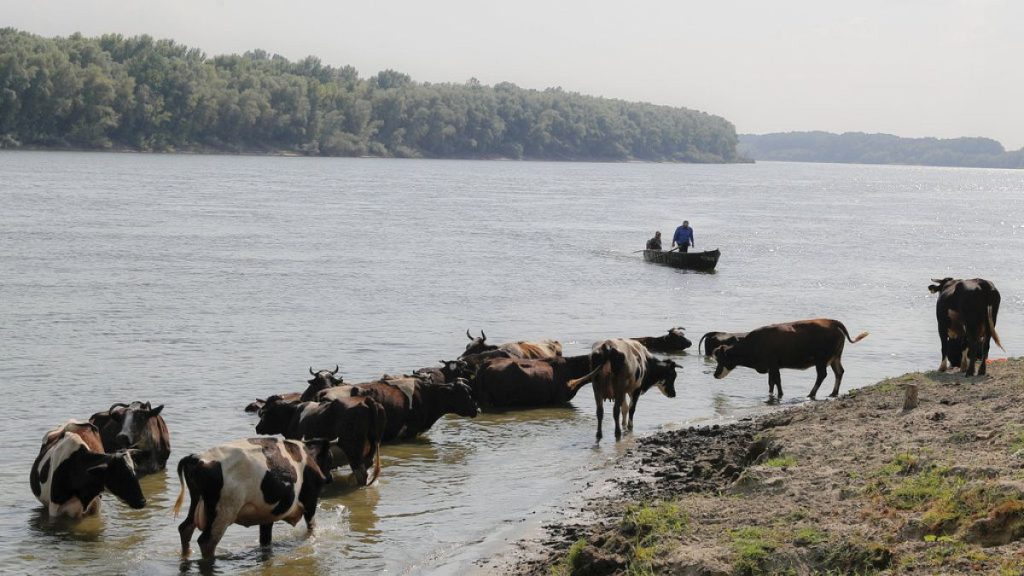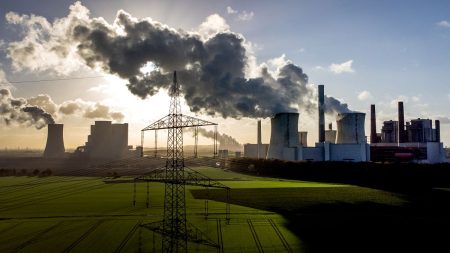Romania has been experiencing record-breaking temperatures in August, with temperatures soaring above 40C. These high temperatures have led to several heat waves throughout the summer, making it difficult for farmers to keep their cattle. The ongoing drought has made it challenging for farmers to provide their animals with enough feed, leading to significant financial strain. Farmer Traian Gîrtan, from the southern county of Olt, has had to sell some of his livestock due to the increased cost of feeding his cattle. Gîrtan estimates that he will have to sell half of his cattle in order to keep his farm running over the winter. This situation is not unique to Gîrtan, as representatives of livestock breeders say that farmers across Romania are facing similar struggles.
The chairman of the Romanian Meat Cattle Breeders Association, Dumitru Grigorean, has warned that the long-term impacts of the drought and resulting livestock crisis will be severe. He estimates that the number of cattle in Romania has drastically decreased from around 7 million to just over a million. Once a farm closes down, it becomes challenging for them to re-enter the business. Farmers fear that consumers will eventually feel the effects of this crisis, as farms may need to raise their prices to compensate for the lack of livestock. The persistent and recurrent drought conditions in Southern and Eastern Europe have exacerbated the situation, leading to concerns about food security in the region. The Romanian government has been compensating farmers for over two million hectares of farmland that have been damaged as a result of the drought, but the long-term effects are still a major concern for farmers and consumers alike.
The impact of the livestock crisis in Romania is already being felt across the country, with farmers struggling to keep their businesses afloat in the face of skyrocketing feed prices and decreased livestock numbers. The effects of the ongoing drought are expected to be long-term, with farmers being forced to sell off herds as early as October and November. This will lead to further decreases in livestock numbers and significant challenges for the agriculture sector in Romania. The situation has become so dire that the country’s National Meteorological Association has issued code orange and yellow alerts in the south and west of the country, mirroring earlier alerts put in place in July. The government has also taken steps to compensate farmers for the damage caused by the drought, but the future remains uncertain for many farmers who are struggling to keep their businesses running.
Overall, the livestock crisis in Romania has been exacerbated by the ongoing drought and record-breaking temperatures, leading to financial strain for farmers and concerns about long-term food security in the country. Farmers like Traian Gîrtan are facing the difficult decision of selling off their livestock in order to keep their farms viable in the face of rising feed prices. The Romanian government has taken steps to mitigate the impact of the drought by compensating farmers for damaged farmland, but the effects of the crisis are expected to be felt for years to come. The decrease in livestock numbers, estimated to be from around 7 million to just over a million, has raised concerns about the future of the agriculture sector in Romania and the potential impact on consumer prices. With code orange and yellow alerts in place and ongoing drought conditions, the situation remains critical for farmers across the country.
As the livestock crisis continues to unfold in Romania, farmers are grappling with the difficult reality of having to sell off their cattle in order to survive the ongoing drought and record-breaking temperatures. The increased cost of feed and decreased livestock numbers have put significant strain on farmers, many of whom are facing the prospect of closing down their businesses. The Romanian government’s efforts to compensate farmers for the damage caused by the drought are welcome, but the long-term effects of the crisis are still a major concern. Consumers may eventually feel the impact of the livestock crisis through higher prices for meat and other products, as farms are forced to raise prices to compensate for their losses. The situation in Romania serves as a stark reminder of the challenges faced by farmers in the face of climate change and extreme weather events.













